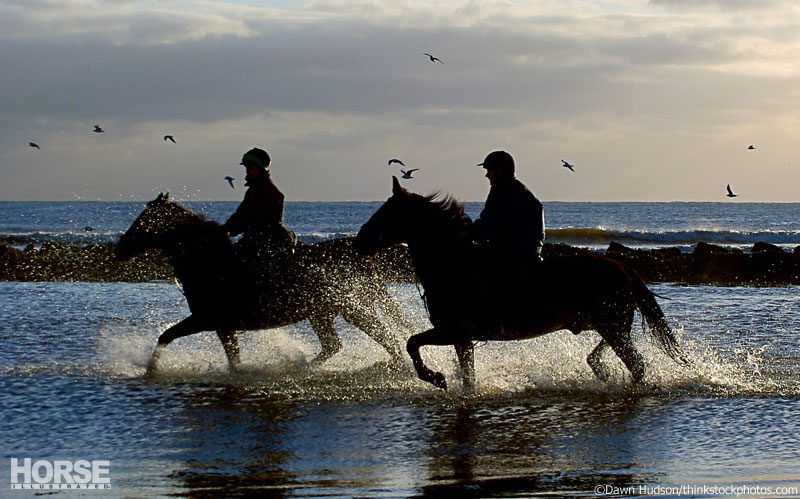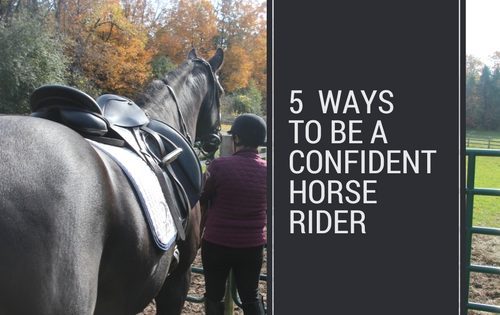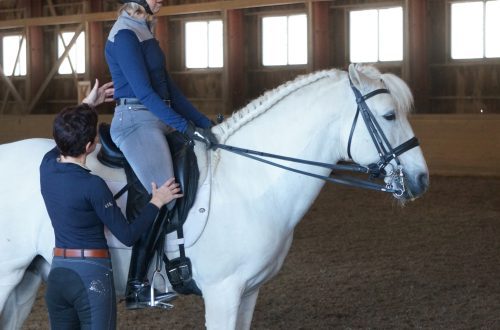
Pat Parelli: teaching a horse to enter the water
Pat Parelli: teaching a horse to enter the water

For many horsemen, riding bareback along the shore of a reservoir on a hot summer day is a very tempting prospect. An amazing, fabulous picture … only if the horse enters the water with pleasure. And if not?
“A water hazard can be one of the most frustrating and dangerous obstacles in your horse’s life,” says Pat Parelli.
Many horses are skeptical about crossing water, unless of course this is not their usual activity. Horses are true survival experts and are extremely receptive to changes in their environment. Water can make even a confident horse doubt, because it is difficult for him to determine the depth. As a result, the horse may decide that he is stepping into an endless dark abyss. The instinct of the animal-victim is immediately connected, which prompts to strive to avoid everything that interferes with the legs, interferes with free movement.
Pat believes that both horses and riders have “duties” to make their partnership harmonious. If both partners fulfill their duties, crossing the water and any other problems become much easier.
Horse Responsibilities:
- act as a partner, not a prey animal;
- do not change pace unless the rider asks for it;
- do not change direction unless the rider asks;
- watch where she goes.
Rider Responsibilities:
- act like a partner, not like a predator;
- have an independent seat and have sufficient experience not to interfere with the movement of the horse;
- think like a horse before thinking like a human.
Start in familiar conditions
Your horse’s first exposure to the water should take place in a safe and relaxed home environment. Before you try to cross the water in a forest or field, your horse must learn to stand calmly during water procedures (bathing). If she doesn’t like it when you pour water on her legs, doesn’t like standing in a puddle, you can hardly expect her to go into the water in unusual conditions. Take the time to work with her on this. Achieve an adequate response to “home” water treatments. Let the horse sniff the water and drink from the hose if he is inclined to do so.
You can also prepare your horse for the water by asking him to walk over unusual objects such as strong plywood sheets or a tarp. This is a great water simulation because it helps the horse feel more confident and less stressed when he has to put his feet on an unknown surface that is different from the usual hard ground. When she walks over these objects without fear or hesitation, it will be easier for her to believe and be convinced that the water is also safe.
Even a horse that plays with the water at home may think about it when you first ask him to walk on the water outside the stable. This is where your work as a leader becomes especially important. Your horse’s confidence depends on you.
If you do everything right, the horse will stop thinking about water and will think about trusting you and his confidence. It’s almost the same as loading into a horse carrier – it’s not about the horse carrier, it’s about whether the horse trusts you when you tell him it’s safe there. Once trust, confidence, and leadership are firmly established, your horse will willingly load into a horse carrier, cross water, and do just about anything you ask him to.
“It’s very important for a horse to trust you to make the decision,” says Pat. “She may have a special mental, emotional and physical state, as well as a heightened sense of self-preservation.”
Possession of basic skills
In order to be the leader your horse needs in non-routine, challenging situations, like crossing water, you first need to build a bond.
“Most riders’ horses don’t have a good go button,” explains Pat. – First you need to work on improving this button and get a good response to the request to move forward. It should respect the pressure of your feet and move immediately when you use it. If she doesn’t, use a whip or lead to touch her hind legs and force her to go forward in response to the squeezing of her legs.
Work on improving the “Go” button before you get close to the water. Your horse must respond to your legs correctly before you hit any obstacle.
Common mistakes
According to Pat, the most common mistake riders make is focusing on the water rather than the destination.
“A common mistake that people make riders, is that they look at the water, and not focus on the right subject, says Pat. “Instead of looking at the water, riders should look where they are going. Focus on something behind the water, not the water. Focus is important because it affects your feeling, timing, and balance. When you drive a car, you don’t look at the steering wheel, you look ahead of where you are going. The more focused you are, the better you can use your seat, legs, and arms. If you’re focused on the wrong subject, you’re usually doing the wrong thing.”
Assess your horse’s emotions. You need her to focus so that she trusts you and respects you. Ideally, your horse should be thinking, not reacting. If your horse shows distrust, you should use the approach-retreat method.
“When a horse gets scared, it runs a short distance, then turns around and reassesses the situation,” explains Pat. “When you get him to turn 180 degrees and look in the direction you just came from, it makes the horse think. That’s what you do when you’re dealing with water crossings: get close to the water and then back off.”
This method takes the pressure off the horse and encourages him to start thinking.
After you have approached and retreated a few times, approach and ask the horse to keep moving forward while squeezing the legs. Squeeze once and, if your horse is not going forward, reinforce the action of the legs with a whip or lead, tapping them on the horse’s hind legs.
“Give the horse 10 seconds and if it still won’t go into the water, dismount and lead it in your arms,” says Pat. “Send the horse between you and the water, not straight at her. Ask your horse to walk back and forth in front of the water until he shows at least some curiosity, instead of panicking and trying to escape. Continue until your horse tries to approach the water on its own. Once her fear is gone, she will feel safe and interested in water. Then get back into the saddle and repeat what you were doing instead of going straight into the water. Be sure to choose places with a hard bottom, avoid deep, viscous places and muddy water.
At first, horses often try to jump into the water rather than walk on it. If your horse does just that, start walking with him in the water along the shore. When the horse gains confidence, he will be ready to cross the water. Do this many times before crossing the water obstacle. If in doubt about depth, remove the martingale or any additional reins from the horse before entering the water. Your horse can drown if it gets into a deep place and cannot lift its head above the water.
Do not attempt to cross the water if you are not yet well seated in the saddle and do not know how to give clear and accurate signals. Remember, if you are nervous, the horse will be affected as well. You must be confident in your ability and what you are asking of the horse.
Finally, don’t be discouraged if things don’t work out. Your disappointment will not add to a positive experience. Focus on becoming the leader the horse needs. And coercion will only make things worse.
“When people get upset, they tend to act like predators and force the horse to do something,” says Pat. – Dont be upset! Prepare your horse in advance for various non-standard situations, and you will succeed.”
Cynthia McFarland (source); translation Valeria Smirnova.





